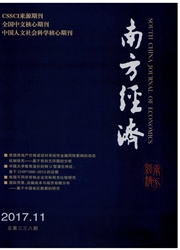

 中文摘要:
中文摘要:
Campbell等(2001)为实证研究市场的长期趋势特征提出了市场波动率分解模型,其特点是将波动率按成因进行分解并且该分解不依赖于β系数。采用该模型,本文将我国股票市场1991至2004年的波动率实证分解为市场波动率、行业波动率和公司波动率。研究了我国股票市场三种波动率的长期变化趋势。与美国市场相比(美国市场1962至1997年间市场和行业波动率保持稳定而公司波动率增长了一倍),本文的实证结果表明:我国市场1991至2004年间市场、行业和公司波动率均存在显著的下降趋势;表现出了与国际市场不同的趋势特点;随着时间的推进,我国股票市场在不断成熟、市场效率不断提高。进一步的研究表明,1998年后我国股票市场中市场波动率最大。公司波动率略小,而行业波动率则远小于前两者。本文的研究结论将为政策制定者和投资组合风险管理者提供宏观借鉴,我国投资风险管理的战略重点首先应对冲市场风险,其次分散公司风险。
 英文摘要:
英文摘要:
In order to empirically study the long-term trend of the volatility, the Campbell et al (2001)proposes a decomposition model which decomposes the volatility based on its causes of formation without the dependence on 13. With the model, this paper decomposes the volatility into market volatility, industrial volatility and firm volatility, then studies their longterm trends between 1991 and 2004 in Chinese stock market. Although the American market volatility and industrial volatility are stable and its firm volatility doubles from 1962 to 1997 ,our study indicates that market, industrial and firm volatility all decrease significantly from 1991 to 2004. Along with the gradual maturity of Chinese stock market, its market efficiency improves continually. Further study indicates that market volatility is the biggest component in Chinese stock market after 1998, with a little smaller firm volatility and a much smaller industrial volatility. The conclusion of this paper will supply references to the market policy maker and portfolio risk manager. The investor should firstly hedge the market risk and then decentralize the firm risk.
 同期刊论文项目
同期刊论文项目
 同项目期刊论文
同项目期刊论文
 期刊信息
期刊信息
